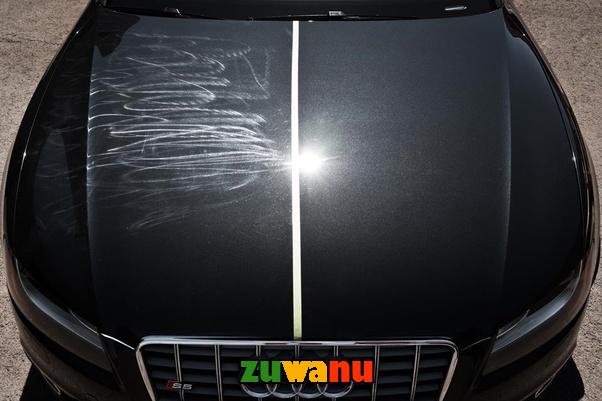Causes of Car Paint Fading and Effective Solutions
Causes of Car Paint Fading and Effective Solutions
Table of Contents
Your car’s paint job not only enhances its aesthetic appeal but also serves as a protective layer against various environmental elements. However, over time, you may notice that the once-vibrant color has faded, leaving your vehicle looking dull and aged. Car paint fading is a common issue that many vehicle owners encounter, and understanding the causes behind it can help you take preventive measures and implement effective solutions. In this comprehensive article, we will delve into the various factors contributing to car paint fading and provide the best tips on how to fix and prevent it.

Understanding Car Paint Fading
Car paint fading occurs when the pigments in the paint lose their vibrancy and begin to break down. The outermost layer of the paint, known as the clear coat, is especially susceptible to damage, as it is directly exposed to the harsh elements of the environment. Several factors contribute to the fading of car paint, and they can be broadly categorized into environmental, mechanical, and chemical factors.
Environmental Factors
1. UV Radiation:
One of the primary causes of car paint fading is prolonged exposure to ultraviolet (UV) radiation from the sun. UV rays can break down the chemical bonds in the paint, leading to a loss of color and gloss. This is why vehicles parked in the open for extended periods are more prone to paint fading.
2. Oxidation:
Oxidation occurs when oxygen reacts with the molecules in the paint, leading to a chemical change. Over time, this process can cause the paint to lose its luster and vibrancy. Factors such as exposure to air pollution and salt can accelerate oxidation.
3. Temperature Fluctuations:
Extreme temperature changes, especially prolonged exposure to high temperatures, can have adverse effects on car paint. Rapid heating and cooling cycles can cause the paint to expand and contract, leading to microcracks that compromise its integrity.
4. Humidity:
High humidity levels can contribute to the growth of mold and mildew on the car’s surface. While these organisms may not directly cause paint fading, they create a damp environment that can accelerate the degradation of the clear coat.

Mechanical Factors
1. Abrasion:
Physical abrasion from dust, dirt, road debris, and even improper washing techniques can scratch the paint surface. These scratches, if not addressed promptly, can lead to further damage and contribute to paint fading.
2. Impact Damage:
Dents and dings from impacts, whether from hail, stones, or other objects, can compromise the integrity of the paint. These damaged areas are more susceptible to fading, as the protective clear coat is compromised.
Chemical Factors
1. Harsh Cleaning Agents:
Using abrasive or acidic cleaning agents can strip away the protective clear coat and damage the underlying paint layers. It is essential to use car-friendly cleaning products to maintain the integrity of the paint.
2. Chemical Fallout:
Industrial fallout, such as acid rain and pollutants, can settle on the car’s surface. The chemicals in these pollutants can react with the paint, leading to discoloration and fading over time.
Now that we have a comprehensive understanding of the various factors contributing to car paint fading, let’s explore the best tips on how to fix and prevent this common issue.
Tips on Fixing and Preventing Car Paint Fading
1. Regular Washing and Waxing:
Keeping your car clean is the first line of defense against paint fading. Regular washing helps remove contaminants that can contribute to abrasion and chemical damage. Additionally, applying a high-quality wax provides an extra layer of protection by shielding the paint from UV rays and environmental pollutants.
2. Protective Coatings:
Consider applying ceramic coatings or paint sealants to create a durable and protective barrier on the paint surface. These coatings can enhance the longevity of your car’s paint by providing resistance against UV rays, oxidation, and chemical fallout.
3. Parking in the Shade:
Whenever possible, park your car in shaded areas to minimize exposure to direct sunlight. If covered parking is not available, consider using a car cover to protect your vehicle from the sun’s harmful UV rays.
4. Window Tints:
Window tints not only provide privacy and reduce heat inside the car but also offer additional protection against UV radiation. UV-resistant window films can help prevent the interior and exterior of your vehicle from fading.
5. Regular Maintenance and Inspection:
Stay proactive in maintaining your vehicle. Regularly inspect the paint for any signs of damage, such as scratches or chips. Addressing these issues promptly can prevent further deterioration and protect the paint from fading.
6. Avoiding Harsh Cleaning Practices:
Use mild, pH-balanced car wash soaps and soft microfiber towels to clean your vehicle. Avoid using abrasive materials or harsh chemicals that can strip away the protective clear coat.
7. Professional Detailing:
Periodic professional detailing can rejuvenate your car’s paint and address minor imperfections. Detailing involves cleaning, polishing, and protecting the paint surface, enhancing its appearance and durability.
8. Paint Protection Film (PPF):
Consider applying paint protection film to high-impact areas of your vehicle, such as the front bumper, hood, and side mirrors. PPF acts as a sacrificial layer, absorbing the impact of road debris and preventing damage to the underlying paint.
9. Avoiding Tree Sap and Bird Droppings:
Promptly remove tree sap and bird droppings from your car’s surface, as these substances can be corrosive and lead to paint damage. Use a gentle cleaning solution and a soft cloth to avoid scratching the paint.
10. Regular Polishing:
Periodic polishing helps remove minor imperfections, restores gloss, and rejuvenates the paint. However, it’s essential to use a non-abrasive polish to avoid causing more harm than good.
11. Temperature Control:
If possible, park your car in a garage to protect it from extreme temperature fluctuations. A garage provides a controlled environment that can mitigate the adverse effects of rapid heating and cooling cycles.
12. Rust Prevention:
Address any signs of rust promptly, as rust can spread and compromise the paint surrounding the affected area. Regularly inspect areas prone to rust, such as the wheel wells and undercarriage.
13. Regular Inspection of Rubber Seals:
Check and maintain the rubber seals around doors, windows, and other openings. Damaged or deteriorating seals can allow water to seep into the car, leading to humidity-related issues that contribute to paint fading.
14. Professional Repairs for Damages:
If your car has sustained significant damage, such as deep scratches or dents, consider seeking professional repair services. Professional repair can ensure that the damaged areas are properly restored, preventing further deterioration.
15. Applying UV Protectant:
Use products specifically designed to protect against UV radiation. UV protectants can be applied to various exterior surfaces, including plastic trims and rubber seals, to prevent deterioration caused by sun exposure.
16. Avoiding Automated Car Washes:
Automated car washes with abrasive brushes can cause micro
-scratches and damage the clear coat. Opt for handwashing or touchless car washes to minimize the risk of paint damage.
17. Consider Repainting:
If your car’s paint has already faded significantly, repainting may be the most effective solution. Consult with professional auto painters to ensure a high-quality and durable paint job that meets your expectations.
Conclusion
Car paint fading is a natural process influenced by various environmental, mechanical, and chemical factors. However, proactive maintenance and adherence to best practices can significantly slow down this process and preserve the aesthetic appeal and value of your vehicle. Implementing a combination of protective measures, regular inspections, and appropriate repairs can ensure that your car’s paint remains vibrant and resistant to the effects of time and the elements. By following the comprehensive tips outlined in this article, you can enjoy a well-maintained and visually appealing vehicle for years to come.
